Miele T 4262 C User Manual

Operating instructions
for condenser tumble dryer T 4262 C
To avoid the risk of accidents or damage to the machine it is essential to read these instructions
before it is installed and used for the first time.
G
M.-Nr. 06 465 730
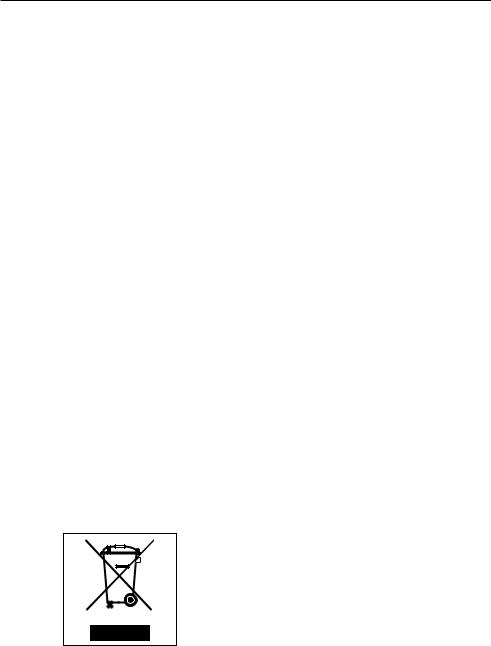
Caring for the environment
Disposal of the packing material
The transport and protective packing has been selected from materials which are environmentally friendly for disposal and can normally be recycled.
Ensure that any plastic wrappings, bags etc. are disposed of safely and kept out of the reach of babies and young children. Danger of suffocation!
Rather than just throwing these materials away, please ensure they are offered for recycling.
Disposal of your old appliance
Electrical and electronic appliances often contain materials which, if handled or disposed of incorrectly, could be potentially hazardous to human health and to the environment. They are, however, essential for the correct functioning of your appliance. Please do not therefore dispose of your appliance with your household waste.
Please dispose of it at your local community waste collection / recycling centre and ensure that it presents no danger to children while being stored for disposal.
It should be unplugged or disconnected from the mains electricity supply by a competent person. The plug must be rendered useless and the cable cut off directly behind it to prevent misuse. See the "Warning and Safety" section of this booklet for further details.
Energy saving tips
To avoid unnecessarily long drying times and high consumption of energy:
–Make sure that your laundry is thoroughly spun before drying.
The higher the spin, the greater the savings that can be made in energy and time during drying.
–Load according to the optimum amount of laundry recommended for the programme being used (see Programme chart).
Underloading is uneconomical. Overloading gives a poorer quality of drying and may cause unnecessary creasing.
–Make sure the room in which the dryer is located is well ventilated.
–Make sure the fluff filters are clean before using the dryer.
–Check the condenser unit from time to time and clean it when necessary.
2

Contents
Caring for the environment . . . . . . . . . . . . . . . . . . . . . . . . . . . . . . . . . . . . . . . . . . 2 Disposal of the packing material . . . . . . . . . . . . . . . . . . . . . . . . . . . . . . . . . . . . . . . 2 Disposal of your old appliance . . . . . . . . . . . . . . . . . . . . . . . . . . . . . . . . . . . . . . . . 2 Energy saving tips . . . . . . . . . . . . . . . . . . . . . . . . . . . . . . . . . . . . . . . . . . . . . . . . . . 2
Warning and Safety instructions . . . . . . . . . . . . . . . . . . . . . . . . . . . . . . . . . . . . . 5
Control panel . . . . . . . . . . . . . . . . . . . . . . . . . . . . . . . . . . . . . . . . . . . . . . . . . . . . . 9
Notes on laundry care . . . . . . . . . . . . . . . . . . . . . . . . . . . . . . . . . . . . . . . . . . . . . 10 Care symbols . . . . . . . . . . . . . . . . . . . . . . . . . . . . . . . . . . . . . . . . . . . . . . . . . . . . . 10 Tips on drying . . . . . . . . . . . . . . . . . . . . . . . . . . . . . . . . . . . . . . . . . . . . . . . . . . . . 10
How to dry correctly . . . . . . . . . . . . . . . . . . . . . . . . . . . . . . . . . . . . . . . . . . . . . . 11 Brief instructions . . . . . . . . . . . . . . . . . . . . . . . . . . . . . . . . . . . . . . . . . . . . . . . . . . 11 Low temperature. . . . . . . . . . . . . . . . . . . . . . . . . . . . . . . . . . . . . . . . . . . . . . . . 12 Changing the programme sequence. . . . . . . . . . . . . . . . . . . . . . . . . . . . . . . . . . . 13
Programme chart . . . . . . . . . . . . . . . . . . . . . . . . . . . . . . . . . . . . . . . . . . . . . . . . . 14
Cleaning and care . . . . . . . . . . . . . . . . . . . . . . . . . . . . . . . . . . . . . . . . . . . . . . . . 16 Emptying the condensed
water container . . . . . . . . . . . . . . . . . . . . . . . . . . . . . . . . . . . . . . . . . . . . . . . . . . . 16 Cleaning the fluff filters . . . . . . . . . . . . . . . . . . . . . . . . . . . . . . . . . . . . . . . . . . . . . 17 Cleaning them whilst dry . . . . . . . . . . . . . . . . . . . . . . . . . . . . . . . . . . . . . . . . . 17 Cleaning them with water . . . . . . . . . . . . . . . . . . . . . . . . . . . . . . . . . . . . . . . . . 18 Cleaning the tumble dryer . . . . . . . . . . . . . . . . . . . . . . . . . . . . . . . . . . . . . . . . . . . 18 Cleaning the condenser unit . . . . . . . . . . . . . . . . . . . . . . . . . . . . . . . . . . . . . . . . . 19 Removing the condenser unit. . . . . . . . . . . . . . . . . . . . . . . . . . . . . . . . . . . . . . 19 Checking the condenser unit . . . . . . . . . . . . . . . . . . . . . . . . . . . . . . . . . . . . . . 20 Cleaning the condenser unit. . . . . . . . . . . . . . . . . . . . . . . . . . . . . . . . . . . . . . . 20 Replacing the condenser unit. . . . . . . . . . . . . . . . . . . . . . . . . . . . . . . . . . . . . . 21
Problem solving guide. . . . . . . . . . . . . . . . . . . . . . . . . . . . . . . . . . . . . . . . . . . . . 22 General problems . . . . . . . . . . . . . . . . . . . . . . . . . . . . . . . . . . . . . . . . . . . . . . . . . 22 Check and fault indicator lamps . . . . . . . . . . . . . . . . . . . . . . . . . . . . . . . . . . . . . . 25 Changing the lamp . . . . . . . . . . . . . . . . . . . . . . . . . . . . . . . . . . . . . . . . . . . . . . . . 27
3

Contents
After sales service . . . . . . . . . . . . . . . . . . . . . . . . . . . . . . . . . . . . . . . . . . . . . . . . 28 Repairs. . . . . . . . . . . . . . . . . . . . . . . . . . . . . . . . . . . . . . . . . . . . . . . . . . . . . . . . . . 28 Appliance guarantee . . . . . . . . . . . . . . . . . . . . . . . . . . . . . . . . . . . . . . . . . . . . . . . 28 Optional accessories . . . . . . . . . . . . . . . . . . . . . . . . . . . . . . . . . . . . . . . . . . . . . . . 28
Installation . . . . . . . . . . . . . . . . . . . . . . . . . . . . . . . . . . . . . . . . . . . . . . . . . . . . . . 29 Front view. . . . . . . . . . . . . . . . . . . . . . . . . . . . . . . . . . . . . . . . . . . . . . . . . . . . . . . . 29 Installation site . . . . . . . . . . . . . . . . . . . . . . . . . . . . . . . . . . . . . . . . . . . . . . . . . . . . 30 Transporting the machine to its installation site . . . . . . . . . . . . . . . . . . . . . . . . 30 Building under a continous worktop / in a row of kitchen units . . . . . . . . . . . . 30 Replacing the lid. . . . . . . . . . . . . . . . . . . . . . . . . . . . . . . . . . . . . . . . . . . . . . . . 30 Levelling the machine. . . . . . . . . . . . . . . . . . . . . . . . . . . . . . . . . . . . . . . . . . . . 31 Room in which the dryer is located . . . . . . . . . . . . . . . . . . . . . . . . . . . . . . . . . 31 Washer - dryer stack. . . . . . . . . . . . . . . . . . . . . . . . . . . . . . . . . . . . . . . . . . . . . 31 Before moving the machine again (e.g. when moving house) . . . . . . . . . . . . . 31 External condensed water outlet . . . . . . . . . . . . . . . . . . . . . . . . . . . . . . . . . . . . . . 32 Setting up the drain hose . . . . . . . . . . . . . . . . . . . . . . . . . . . . . . . . . . . . . . . . . 32 Connection to a sink drain outlet . . . . . . . . . . . . . . . . . . . . . . . . . . . . . . . . . . . 33 If you no longer wish to use an external condensed water outlet . . . . . . . . . . 33
Electrical connection . . . . . . . . . . . . . . . . . . . . . . . . . . . . . . . . . . . . . . . . . . . . . 34 Electrical connection U.K. . . . . . . . . . . . . . . . . . . . . . . . . . . . . . . . . . . . . . . . . . . . 34
Consumption data . . . . . . . . . . . . . . . . . . . . . . . . . . . . . . . . . . . . . . . . . . . . . . . . 35
Technical data . . . . . . . . . . . . . . . . . . . . . . . . . . . . . . . . . . . . . . . . . . . . . . . . . . . 36
Programmable functions. . . . . . . . . . . . . . . . . . . . . . . . . . . . . . . . . . . . . . . . . . . 38 Altering the residual moisture level in the Cottons programmes . . . . . . . . . . . . . . 38 Altering the residual moisture level in the Minimum iron programmes . . . . . . . . . 39 Activating and deactivating the buzzer . . . . . . . . . . . . . . . . . . . . . . . . . . . . . . . . . 40 Extending the cooling down time . . . . . . . . . . . . . . . . . . . . . . . . . . . . . . . . . . . . . 41 Changing the standard drying level in the Minimum iron - Normal programme . . 42 Changing the standard drying level in the Automatic programme . . . . . . . . . . . . 43
4
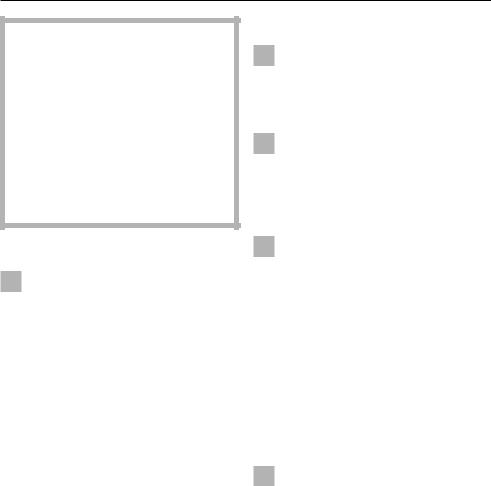
Warning and Safety instructions
To avoid the risk of accidents and damage to the machine please read these instructions carefully before using it for the first time. They contain important information on its safety, installation, use and maintenance.
Keep these instructions in a safe place and ensure that new users are familiar with the content. Pass them on to any future owner of the machine.
Correct use
The tumble dryer is only intended for drying fabrics which have been
washed in a water solution, marked on the manufacturer's care label as being suitable for tumble drying.
"Dry cleaning kits" for freshening up garments in a tumble dryer are increasingly available on the market. If using, do so at your own risk, and follow the instructions provided on the packaging.
Any other applications may be dangerous. The manufacturer is not liable for damage resulting from improper use or operation.
Technical safety
Before setting up the machine, check it for any externally visible
damage.
Do not install or use a damaged machine.
Before connecting the machine, ensure that the connection data on
the data plate (voltage and connected load) match the mains electricity supply. If in any doubt, consult a qualified electrician.
The electrical safety of this machine can only be guaranteed
when continuity is complete between it and an effective earthing system which complies with local and national regulations. It is most important that this basic safety requirement is present and regularly tested, and where there is any doubt the household wiring system should be inspected by a qualified electrician. The manufacturer cannot be held liable for the consequences of an inadequate earthing system (e.g. electric shock).
Do not connect the appliance to the mains electricity supply by an
extension lead. Extension leads do not guarantee the required safety of the appliance (e.g. danger of overheating).
5

Warning and Safety instructions
The machine is built in accordance with current safety requirements.
Unauthorised repairs could result in unforeseen dangers for the user, for which the manufacturer cannot accept liability. Repairs should only be undertaken by a Miele approved technician.
Ensure current is not supplied to the machine until after maintenance or repair work has been carried out.
Faulty components must only be replaced by genuine Miele original
spare parts. Only when these parts are fitted can the safety standards of the machine be guaranteed.
If the connection cable is faulty it must only be replaced by a Miele approved service technician to protect
the user from danger.
In countries where there are areas which may be subject to infestation
by cockroaches or other vermin, pay particular attention to keeping the machine and its surroundings in a clean condition at all times. Any damage which may be caused by cockroaches or other vermin will not be covered by the machine guarantee.
6

Warning and Safety instructions
In the event of a fault or for cleaning purposes, the machine is
only completely isolated from the electiricty supply when:
–it is switched off at the wall socket and the plug is withdrawn, or
–it is switched off at the mains, or
–the mains fuse is withdrawn.
Operation
This equipment may only be used in mobile installations such as
ships, caravans, aircraft etc. if a risk assessment of the installation has been carried out by a suitably qualified engineer.
The dryer must not be used without the fluff filters in place or if the fluff
filters are damaged in any way.
The fluff filters must be thoroughly dried after cleaning. If they are still damp or wet when replaced there is a
risk of faults occurring when the machine is used.
The dryer must not be used without the condenser unit in place.
Do not install the machine in a room where there is a risk of frost
occurring. At temperatures around freezing point the machine may not be able to operate properly.
There is a risk of damage if the condensed water is allowed to freeze in the pump, hoses and / or condensed water container.
The ambient room temperature should be between +2°C and +35°C.
If the water is drained externally through the drain hose instead of
being collected in the condensed water container, make sure the drain hose is securely attached if you hang it in a sink or basin to avoid the hose slipping and the water causing damage.
Condensed water is not drinking water. It can cause health
problems in both people and animals.
Always keep the area around the machine free of dust and fluff. Dust
drawn into the machine can, over time, cause blockages in the condenser unit.
7

Warning and Safety instructions
To prevent the risk of fire the following textiles must not be
dried in this machine:
–fabrics which contain a large proportion of rubber, foam rubber or rubber like materials.
–items which contain padding or fillings (e.g. pillows, jackets).
–items which have been treated with inflammable cleaning agents.
–items which have been splashed with hair lacquer, hair spray, nail varnish remover or similar substances.
–items which have been soiled with oils or residues containing grease (kitchen oils, cosmetics etc.).
–items soiled with wax or other chemicals (e.g. mops and floor cloths).
–items which have not been thoroughly cleaned and which are still soiled with grease or oil, e.g. workwear. Such clothing may require a heavy duty detergent to get them clean. If necessary consult the detergent manufacturer for advice.
Do not let anyone sit or lean on the door, as this can cause the
machine to tip up.
Always close the door after use. This way you will avoid the danger
of:
–children climbing onto or into the dryer or hiding things in it.
–pets or other small animals climbing into it.
Safety with children
This machine is not a toy. To avoid the risk of injury keep children
away from the machine at all times and supervise them whilst you are using it. Do not allow children to play on or near it or to play with its controls. Supervise its use by the elderly or infirm.
Using accessories
Accessory parts may only be fitted when expressly approved by Miele.
If non-Miele parts are used with this machine, guarantee, performance and product liability claims may be invalidated.
Disposal of your old machine
Before discarding an old machine, switch it off at the wall socket and unplug it. Render the plug useless and
cut off the cable directly behind the machine. This should be done by a competent person.
The manufacturer cannot be held liable for damage caused by
non-compliance with these Warning and Safety instructions.
8
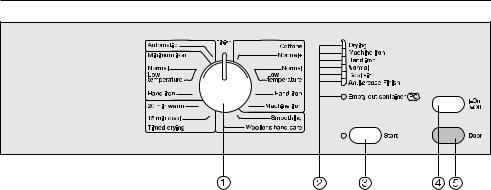
Control panel
a Programme selector
The programme selector can be turned clockwise or anti-clockwise.
b Programme sequence and check lamps
c Start button
Press the Start button to start a programme.
The Start indicator lamp will flash as soon as a programme can be started. It lights up constantly once the programme has started.
d I-On/0-Off button
To switch the machine on or off / to interrupt a programme.
The Anti-crease/Finish lamp will light up as confirmation that the machine has been switched on.
e Door Button
To open the door / to cancel a programme.
Pressing this button will open the door even when the machine is switched off at the mains.
If the machine is switched on at the mains and the door is opened the drum lighting will come on. It will go out a few minutes later to save energy.
PC indicator light
The indicator light marked PC is used by Miele Service technicians as an optical interface.
9

Notes on laundry care
Care symbols
Before drying check the drying symbol on the care label. If there are no symbols, dry at your own risk!
q . . . . . . . . . Dry at normal temperature r . . . . . . . . . . Dry at a low temperature s . . . . . . . . . . . . . . . Do not tumble dry
–For delicates and fabrics with the following care label r select Low temperature.
Tips on drying
–Always observe the maximum recommended loads given in the "Programme chart". Never overload the drum.
Overloading can cause unnecessary wear and tear to the laundry, give a disappointing drying result and cause more creasing.
–Do not put soaking wet items into the tumble dryer. Spin them thoroughly after washing using the appropriate spin speed.
–Use the Automatic programme for drying mixed loads of cottons and minimum iron fabrics.
–Open jackets so that they can dry evenly.
–Woollens and wool blends tend to become matted and shrink if dried in a tumble dryer. They can, however, be partially dried using the Woollens hand care programme.
–Down-filled garments have linings which have a tendency to shrink, depending on the quality of the item. They can be partially dried using the Smoothing programme.
–Pure linen should only be machine dried if specified as suitable by the manufacturer on the care label, as the surface of the fabric may otherwise become rough. They can be partially dried using the Smoothing programme.
–Loopknit garments (e.g. T-shirts and underwear) tend to shrink depending on their quality. Do not over-dry these textiles. When purchasing these garments it is advisable to take their shrinkage properties into account.
–Minimum iron fabrics and 100% cotton shirts or blouses tend to crease more, the greater the load. This is especially true of very fine weaves.
Reduce the load or use the Minimum iron - Hand iron programme.
–Starched laundry can be dried in the tumble dryer. To achieve the usual finish, double the amount of starch should be used.
–New dark coloured garments should be washed and dried separately from light coloured garments to avoid the danger of colours running and discolouring other garments or even plastic components in the machine. Dark coloured fibres can also settle on light coloured garments and vice versa.
10
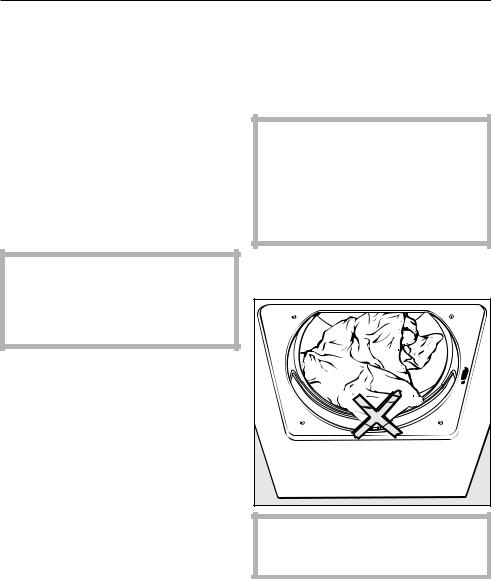
How to dry correctly
Brief instructions
The headings numbered (A, B, C ...) show the operating sequence and can be used as a brief guide to using your machine.
A Sort the laundry
To ensure an even drying result separate out the washed laundry and sort it according to: . .
. . . the drying level required
. . . the type of fibre or weave
. . size
. . the moisture content after spinning.
,Make sure that objects e.g. detergent dispensing balls have been removed from the laundry. They could melt, and cause damage to the dryer or the laundry.
–Check seams and stitching to ensure that padding and linings are intact.
–Fasten duvet covers and pillow cases to prevent small items from being trapped inside them.
–Fasten hooks and eyes etc.
–Tie fabric belts and apron strings.
–Sew in or remove underwiring from bras.
B Turn on the tumble dryer
^Switch the dryer on by pressing the
I-On/0-Off button in.
The tumble dryer may be switched on after loading, saving energy as the light will not come on.
C Load the tumble dryer
^Press the Door button to open the door.
^Load the laundry loosely into the drum.
Do not overload the drum. See the "Programme chart" for recommended loads for each programme.
Overloading can cause unnecessary wear and tear to the laundry and give a disappointing drying result.
^Before closing the door make sure the fluff filter is correctly positioned.
Check the laundry is right inside the drum so that it cannot get trapped or damaged when the door is shut.
^Shut the door either with a gentle swing, or lean against it and push it shut.
11
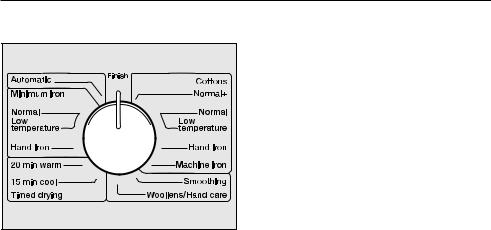
How to dry correctly
D Select a programme
^Turn the programme selector to the required programme.
Low temperature
^For drying particularly sensitive fabrics (care symbol r) e.g. acrylics turn the programme selector to the
Low temperature position.
Because the heater rating is reduced for the Low temperature setting clothes dry more slowly thus lengthening drying times.
E Start the programme
^ Press the Start button.
The indicator lamp for the Start button will then change from flashing to being on constantly.
The drying cycle begins.
Depending on the programme selected, the drying stage reached is shown by the sequence indicator lamps on the right hand side of the control panel.
Before the end of a programme
The cooling down phase takes place before the end of a programme so that the garments are not too hot to handle (the Cool air indicator lamp will come on). The programme is not finished until the cooling down phase is complete. The Woollens handcare and Smoothing programmes do not include a cooling down phase.
At the end of a programme
The Anti-crease/Finish indicator lamp comes on.
The drum will continue to rotate at intervals to prevent laundry creasing, if you do not wish to remove it immediately. The anti-crease phase lasts for an hour. There is no anti-crease phase on the Woollens handcare programme.
During the anti-crease phase . . .
. . . (depending on the programme selected) the indicator lamp for the drying stage reached will also light up.
. . . the buzzer will sound at intervals.
12
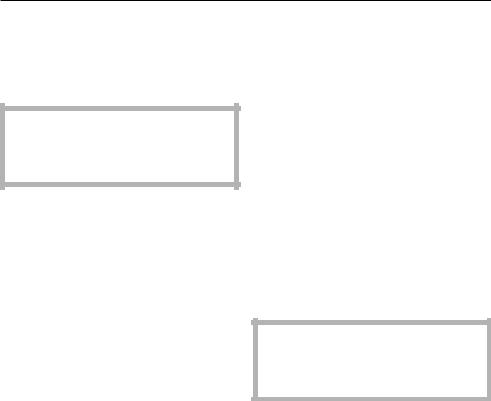
How to dry correctly
F Remove the laundry
^Press the Door button.
^Open the door.
^Remove the laundry.
Make sure that the drum is empty. If items are left in the dryer, they could be damaged by overdrying when the dryer is next used.
^Switch the dryer off by pressing the l-On/0-Off button.
^Clean the fluff filters.
^Close the door.
^Empty the condensed water container (where there is no external drainage of the water).
^The condenser unit should be checked and cleaned on a regular basis.
Changing the programme sequence
Changing a programme while it is running
As long as the cooling down phase or the anti-crease phase has not been reached, it is possible to change a programme after it has started by turning the programme selector to a different programme position.
To interrupt a programme
^Switch the machine off with the
I-On/0-Off button.
To continue drying:
^Switch the dryer on with the
I-On/0-Off button.
The programme will continue (only with the Cottons, Minimum iron and Automatic programmes).
Other programmes:
^ Press the Start button.
To cancel a programme
^Turn the programme selector to Finish or open the door.
Adding or removing laundry after a programme has started
^Press the Door button.
^Open the door.
,Do not touch the back of the drum when adding or removing items. The drum could be very hot - danger of burning.
^Add or remove items.
^Close the door.
^Press the Start button.
13

Programme chart
Cottons |
|
|
Max. load: 6 kg* |
Normal+, Normal**, Low temperature |
|
||
Fabric |
Single and multi-layered cottons fabrics such as towelling, jerseywear, |
||
type |
underwear, flannelette bed linen. |
|
|
Note |
– Select Low temperature for fabrics with the r symbol. Laundry is |
||
|
dried at a lower temperature. |
|
|
Hand iron**, Machine iron |
|
||
Fabric |
Cottons and linen fabrics, e.g. table linen, bedlinen, starched laundry. |
||
type |
|
|
|
Note |
To prevent laundry from drying out it should be rolled up until you are |
||
|
ready for ironing. |
|
|
Minimum iron |
|
Max. load: 3 kg* |
|
Normal**, Low temperature, Hand iron |
|
||
Fabric |
Minimum iron items made of cotton, synthetic or blended fabrics, e.g. |
||
type |
shirts, blouses, skirts and table cloths. |
|
|
Notes |
– Select Low temperature for fabrics with the r symbol (e.g. acrylic |
||
|
garments). Laundry is dried at a lower temperature. |
|
|
|
– Select Hand iron for delicate fabrics and to reduce creasing even |
||
|
more, reduce the load to 1.5 kg*. |
|
|
|
– In the Miniumum iron Hand iron programme, items are dried with |
||
|
very little creasing, depending on fabric type and amount of load. |
||
*Weight of dry laundry
**Note for test institutes:
Programme setting for testing in accordance with EN 61121
14
